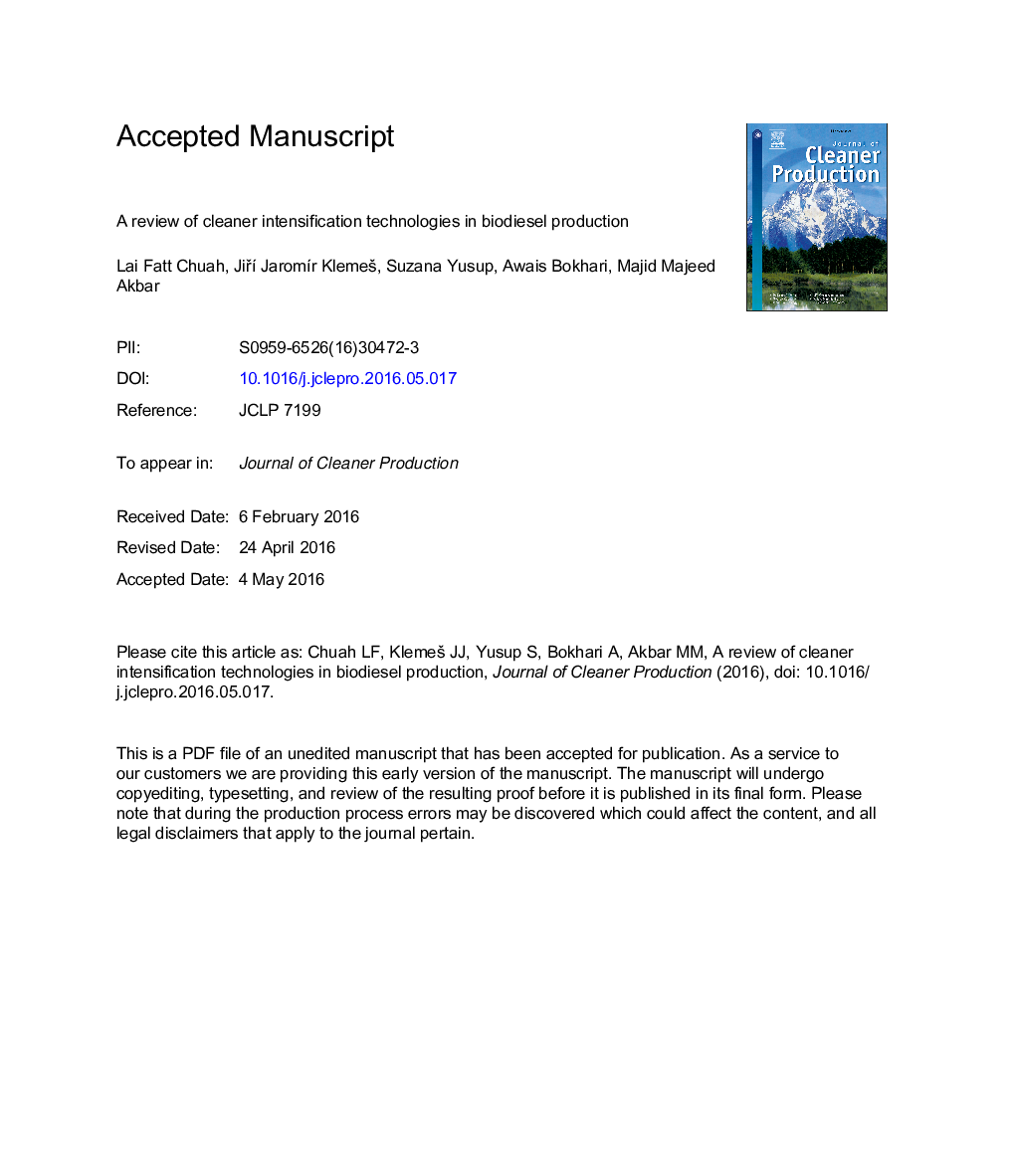| کد مقاله | کد نشریه | سال انتشار | مقاله انگلیسی | نسخه تمام متن |
|---|---|---|---|---|
| 5480156 | 1522107 | 2017 | 46 صفحه PDF | دانلود رایگان |
عنوان انگلیسی مقاله ISI
A review of cleaner intensification technologies in biodiesel production
ترجمه فارسی عنوان
بررسی تکنیکهای تشدید پاک کننده در تولید بیودیزل
دانلود مقاله + سفارش ترجمه
دانلود مقاله ISI انگلیسی
رایگان برای ایرانیان
کلمات کلیدی
تولید بیودیزل، پاک کننده، تشدید شدن، فن آوری ها،
موضوعات مرتبط
مهندسی و علوم پایه
مهندسی انرژی
انرژی های تجدید پذیر، توسعه پایدار و محیط زیست
چکیده انگلیسی
Biodiesel is envisaged as environmentally benign fuel due to its unique properties, such as biodegradability, renewability and non-toxicity. Its utilisation leads to the reduction of sulphur oxide and greenhouse gas emissions as it produces quite lower amounts of carbon and sulphur based gases in comparison to conventional fossil fuels. This paper is a review of the recent achievements of the cleaner intensification technologies for biodiesel production. Merits and limitations of the cleaner intensification technologies have been discussed. Mechanical stirring via transesterification is the most common and extensively utilised for biodiesel production. It involves the conversion of oil to glycerol and acid alkyl ester while employing methanol. However, this process has an inherent drawback of mass transfer resistance resulting in a lower reaction rate and higher production cost. Intensification technologies have become more attractive to overcome these aforementioned problems. In a bid to increase the cost competitiveness of biodiesel production compared to diesel fuel, process intensification has been studied for numerous biodiesel processing technologies. Many researchers have resorted to several intensification technologies namely; microwave, ultrasonic cavitation and hydrodynamic cavitation reactor to eliminate the mass transfer resistance of immiscible reactants. Once the mass transfer resistance is reduced, it may lead to a shorter reaction time and lower energy consumptions compared to mechanical stirring. Recent studies reveal that microwave and ultrasonic cavitation techniques are not yet completely feasible for biodiesel production at industrial scale. On the other hand, it was found that hydrodynamic cavitation offers a number of advantages over other intensification technologies. It shows good performance with respect to product yield, reaction time, energy consumption and product quality. Furthermore, it exhibits a sustainable mean for energy recovery from renewable oils. It was concluded that more studies are needed to extend the existing information of hydrodynamic cavitation for the design of the plate geometry with respect to the methyl ester conversion. This will help to develop a sustainable and industrially viable route for energy recovery from renewable oils. Yield efficiency in relation to the method followed the order: hydrodynamic cavitation > microwave > ultrasonic cavitation > mechanical stirring.
ناشر
Database: Elsevier - ScienceDirect (ساینس دایرکت)
Journal: Journal of Cleaner Production - Volume 146, 10 March 2017, Pages 181-193
Journal: Journal of Cleaner Production - Volume 146, 10 March 2017, Pages 181-193
نویسندگان
Lai Fatt Chuah, JiÅà JaromÃr KlemeÅ¡, Suzana Yusup, Awais Bokhari, Majid Majeed Akbar,
